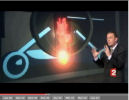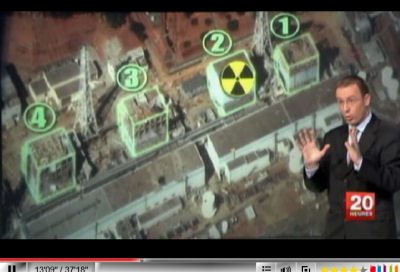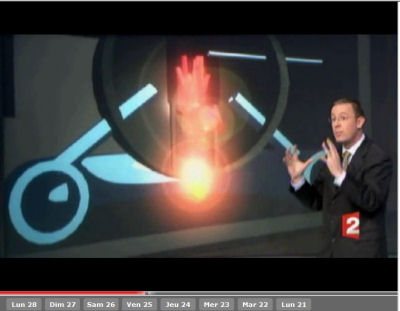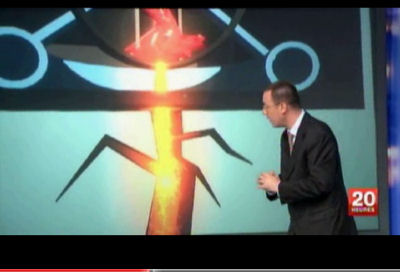Fukushima Reactor 3: Full meltdown now feared
 Fukushima Reactor No. 3: Full meltdown now feared. Article includes diagrams of corium formation and meltdown.
Fukushima Reactor No. 3: Full meltdown now feared. Article includes diagrams of corium formation and meltdown.
This and other updates from French sources are provided here occasionally because diversity of sources is so lacking in the anglophone media. France has nuclear plant expertise and the Japanese nuclear situation receives very detailed coverage there on the nightly news, in contrast to reports in Australia, for instance. The 2000 hrs French news occurs at 0500 Australian time (daybreak the next day) before there is much news coverage in Australia.
Update from French news analysis 2000hrs, 28-3-2011
At Fukushima, small amounts of plutonium have been detected in soil at 5 different locations. No-one knows where it is coming from, which lack of knowledge is an indicator, in itself, of loss of control over the situation.
Reactor no.2 on which an attempt to cool it was made by spraying it with seawater has suffered corrosion to electrical circuits. TEPCO workers cannot get close to it to repair it.


In reactor no.3 there is radioactive molten metal and it is thought that it has begun to meld with the metal base of the reactor containment structure. If that happens corium will be formed, which can heat up to 2500 degrees and will then start to infiltrate the 7-8m thick concrete foundation of the reactor plant itself. This extremely dangerous substance could then eat its way through the concrete and enter the soil below and then find its way to the sea. This would be a new variation on nuclear reactor catastrophes, since this has not happened in any earlier ones.
What is Corium?

"What people mean when they say "meltdown" can refer to several different things, all likely coming after a hydrogen explosion. A "full meltdown" has a more generally accepted definition than, say, a "partial meltdown." A full meltdown is a worst-case scenario: The zirconium alloy fuel rods and the fuel itself, along with whatever machinery is left in the nuclear core, will melt into a lava-like material known as corium. Corium is deeply nasty stuff, capable of burning right through the concrete containment vessel thanks to its prodigious heat and chemical force, and when all that supercharged nuclear matter gets together, it can actually restart the fission process, except at a totally uncontrollab le rate. A breach of the containment vessel could lead to the release of all the awful radioactive junk the containment vessel was built to contain in the first place, which could lead to your basic Chernobyl-style destruction."
Source: Dan Nosowitz, "How Nuclear Reactors Work, And How They Fail," Popular Science, Posted 03.14.2011.

Recent comments